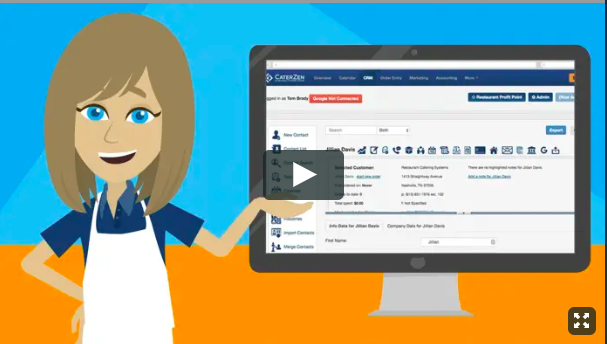It’s not easy becoming a stellar salesperson and it certainly doesn’t happen overnight; it takes hard work and perseverance to learn the tools of the trade. One of the critical skills you need to hone is the ability to identify when your client is ready to buy and close the sale. There are both large and little signals that you can pick up on that will let you know when the time is right to make a move.
This article is here to illuminate what makes a good salesperson, as well as some of the key signals you should be looking for when working with prospects. It’s time for you to let go of your inhibitions and close that sale.
What makes a good salesperson?
Before going into the signals you should be watching for, there’s a more important question: What makes a good salesperson? The whole point of sales is to help a customer (whether an individual or a business) to fulfill a need of theirs that your company provides.
However, to do that effectively and with a high success rate, you need to bring energy and passion to the table. I already know you have the passion for being in the special events industry; however, we need to bring that same passion to the sale.
A prospect needs to feel that you love what you do, feel good about what you sell, and that you know the answer to every question they have or, at the very least, know how to get it. It’s more than just making a sale; it’s about forming a relationship with the client and reassuring them that they are in good hands. The client will be able to feel the energy being transferred between you, whether good or bad.
You also need to be able to read people. A good salesperson learns how to identify and translate both verbal and non-verbal cues — this is essential for identifying buying signals. Connecting non-verbally provides a new level of communication with the customer, and they will see you as more professional and experienced when you can read them.
Quick tip: Eye contact can be hard for some of us, but the client doesn’t need to know that. Instead of looking in the eyes, focus on the end of their nose. You can still pick up sales cues and the client will think you are looking at them in the eyes.
Identifying buying signals & closing the sale
Now for the main event: Detecting the signals when your customer is ready to buy. Below, you will find some of the most common buying signals that indicate the customer is prepared to move forward with the transaction. In fact, you are likely to see at least two of these during your next interaction.
#1 Nodding their head
This is a classic non-verbal cue that signifies the customer is interested, agreeable, and ready to make the purchase. Keep watching their face while you talk and you will be able to pick up on even the faintest nods during your chat. When you see the nod, start making your way towards the closing of the deal.
#2 The client starts repeating a benefit statement
Repetition is essentially a request for validation — your prospect wants you to confirm the information you have given them. It shows that the benefit is significant to them, so circle back and provide them with the confirmation they are looking for. If you see this signal, take two steps: validate and move towards the close.
#3 The client asks for the price
Asking for the price does not mean that the client is rejecting it, although many salespeople take it this way. In fact, it is a sign of interest and you can confirm this by asking if you are on the right track and whether the product meets their needs before you head towards the close. Don’t apologize for the price or defend it.
#4 Are there any other styles or colors to choose from?
By asking you for other styles or colors, they aren’t telling you that they dislike what is being offered – they just want to know if there is more variety available. Take this question with enthusiasm and show them everything you’ve got. If you have nothing, remain excited by what you do have and start steering the pitch towards that sweet close.
#5 How much money do you need to start?
This is a sign of interest in your company and making an investment in what you are offering. It’s a genuine question and one that means you can start heading towards finalizing the deal once you have answered it. Keep your energy up, as well as your interest in the client. Remember: the customer is the center of attention here.
#6 Do I have to pay it all right now or can I do it in installments?
With this question, they are already thinking about buying your product and this is likely one of the last questions they intend to ask. Determining payment methods and potential plans is essential, so this is one of the best signs that you can jump straight to the close.
#7 Do you offer any other discounts?
Your customer isn't cheap—it’s important not to think of them this way so they don’t pick up on your energy. They are being smart and asking for discounts is another sure sign that they are heading for a close with you. Be open with anything that is available, and always be as accommodating as possible.
Obvious cues to look for
To continue helping you learn to identify cues and signals, here are a few obvious ones across various industries that you can remember and learn from:
• If a customer in a restaurant has their wallet out, they are likely ready for the bill.
• If a customer in a restaurant has their menu closed, they are probably ready to order.
• If a customer in a store has spent more than a few minutes looking at the same product, they likely need assistance or want more information.
• If a customer has crossed arms and sighs frequently, they are likely frustrated and in need of assistance, or for a situation to be diffused.
• If a customer is interested in something, expect a lot of face touching, movement around the product, and head tilting.
Some of the signals might seem a little obvious when you read about them, but identifying them when you are closing a sale can be tough—primarily when you are focusing on selling the product or service to the client. You won’t be an expert instantly, but if you print this article and place it by your desk, it will act as a solid reminder of what to look for—including some of the obvious cues that are easily missed. Learning to focus on pitching and signal identification will take time, but by the end of it, you are sure to be a smooth, slick, and unstoppable sales force. Just remember—bring your energy and passion and act on the buying signals; if you don’t, chances are your competition will.




















